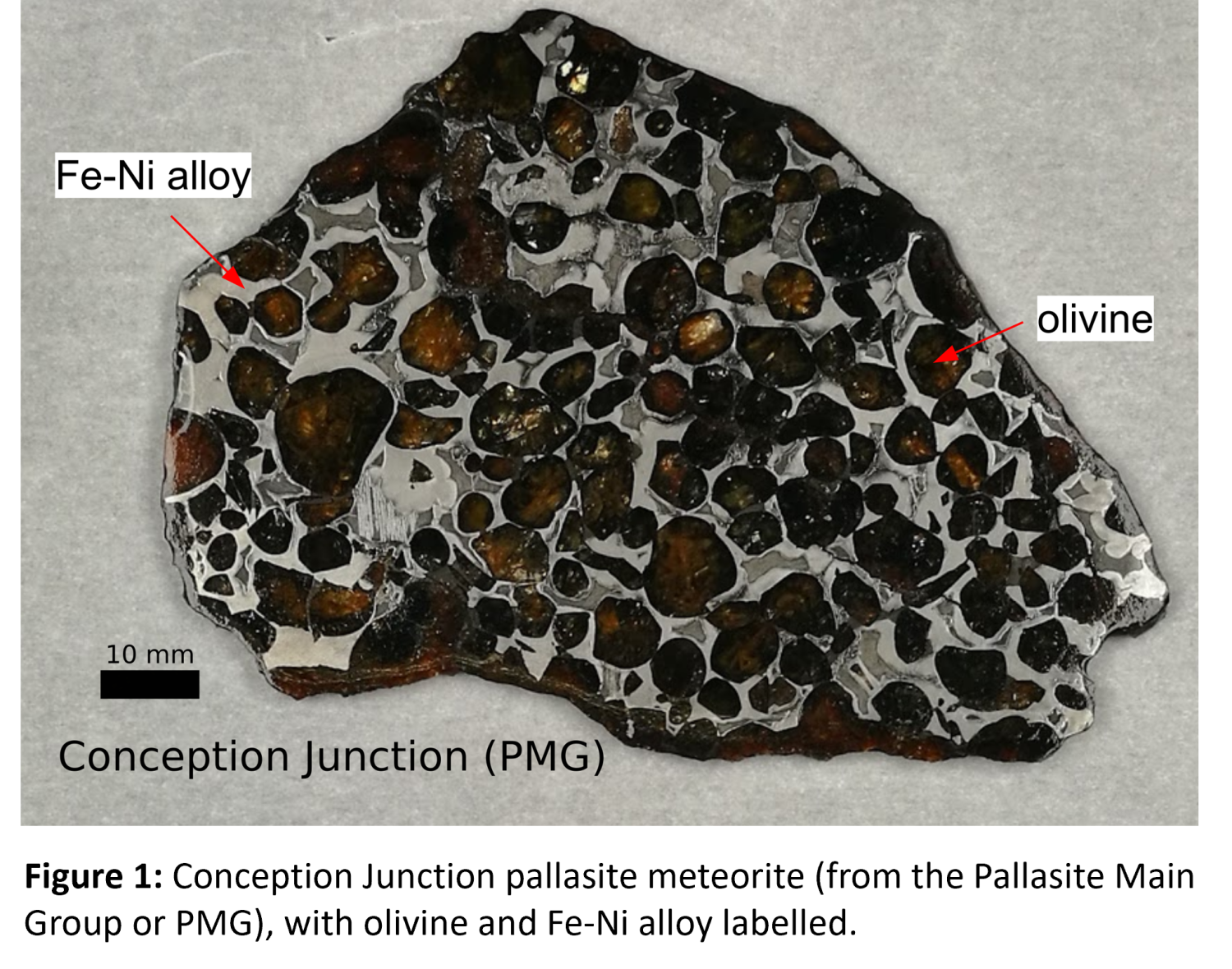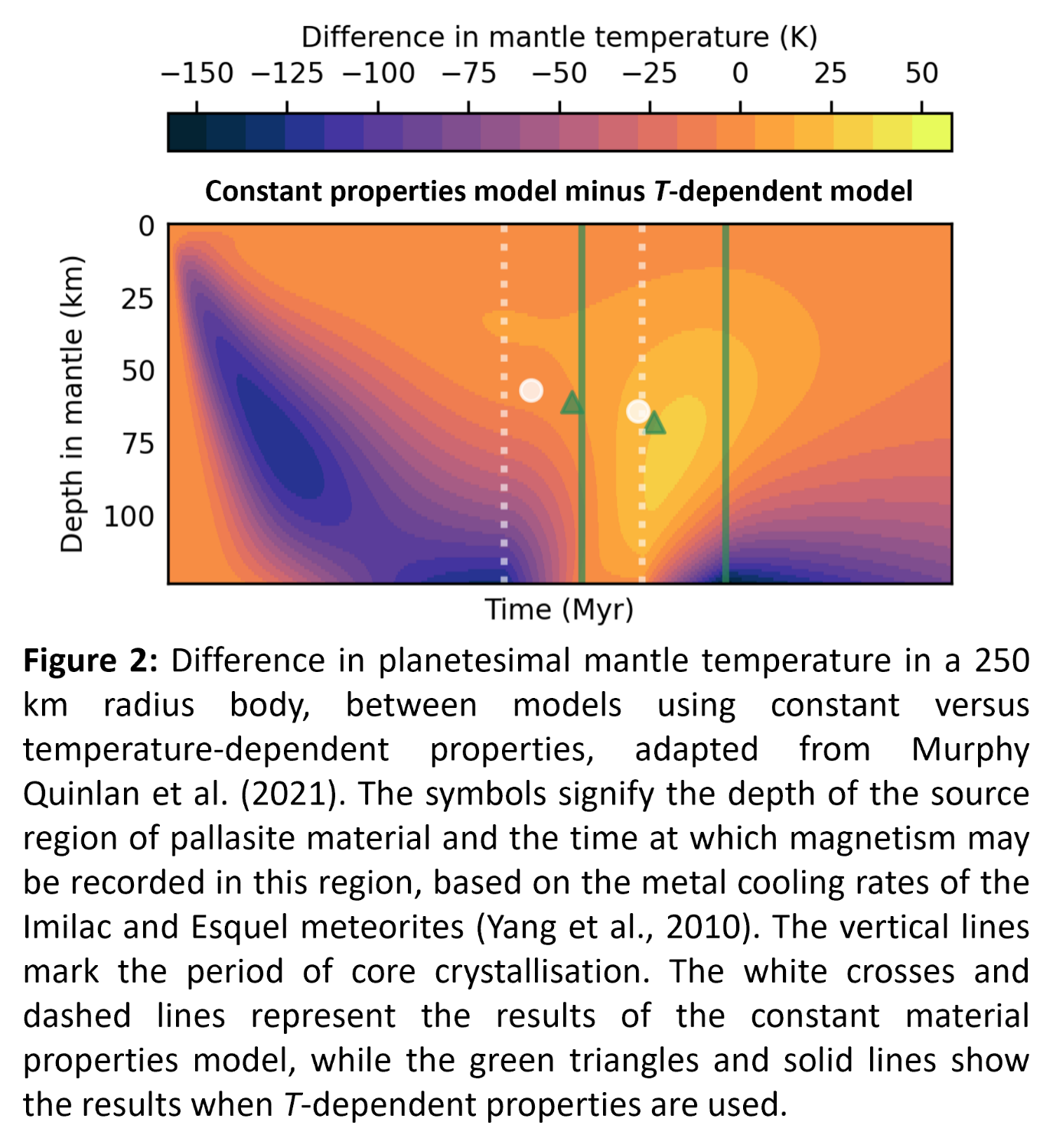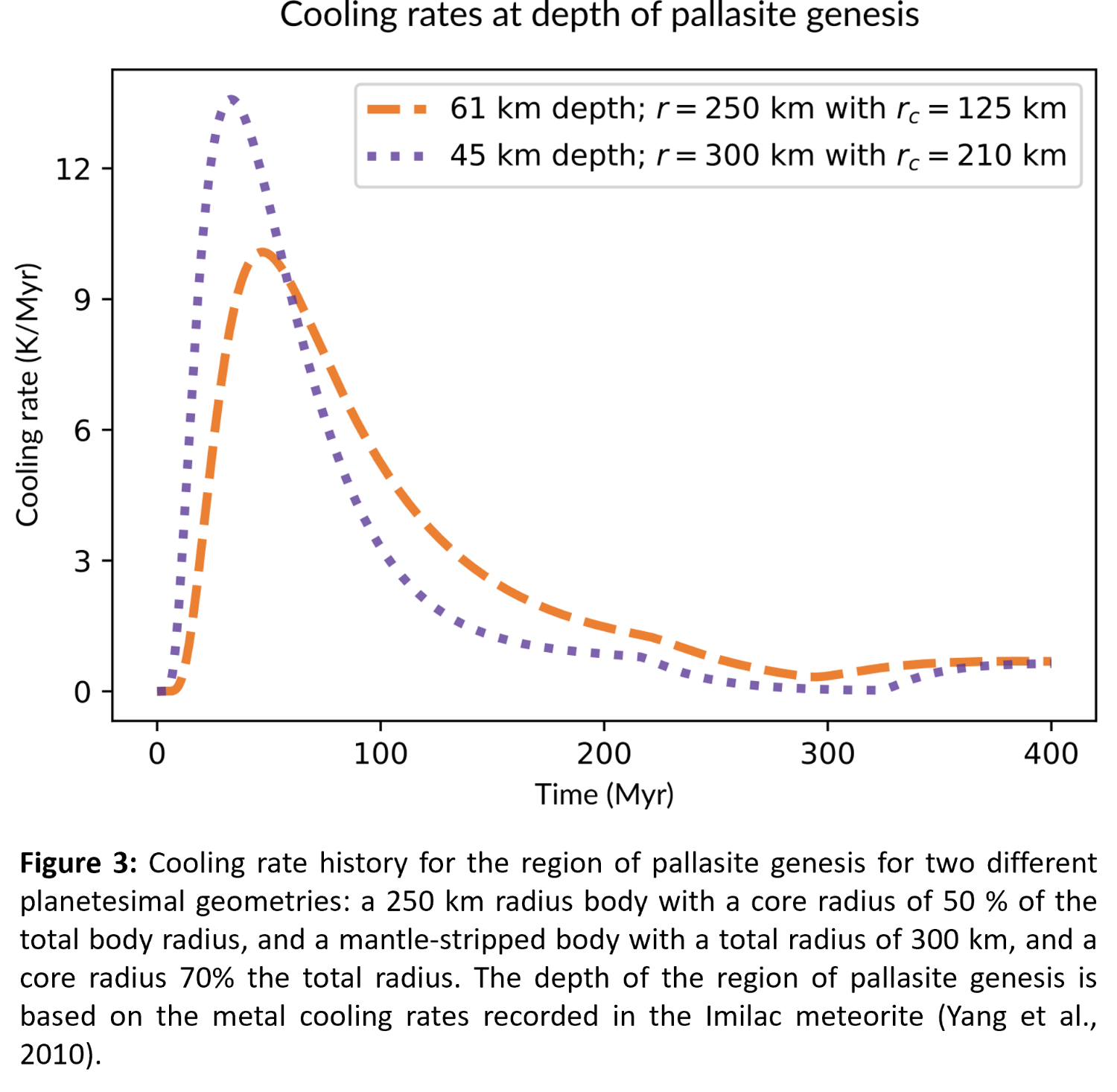Investigating the pallasite parent body at multiple scales
- 1School of Earth and Environment, University of Leeds, Leeds, UK (eememq@leeds.ac.uk)
- 2Department of Earth Sciences, University of Oxford, Oxford, UK
- 3Geoscience Center, Georg-August-University Göttingen, Göttingen, Germany
The formation mechanism of pallasite meteorites, which are mixtures of Fe-Ni metal and olivine (Figure 1), is not agreed upon within the literature. Formation hypotheses as diverse as relict core-mantle region material [1], catastrophic impact-related mixing [2], metallic volcanism [3], fractional melting of a chondritic body [4] or a combination of the above [1] have been suggested. In this abstract, we build on the recently published results of Murphy Quinlan et al., 2021 [5], with a focus on the formation of pallasite meteorites and constraint of their formation environment using coupled numerical models.

Numerical models of the thermal evolution of planetesimals provide us with insights into the geological context of meteorite samples. Temperature-dependent properties such as thermal conductivity and volumetric heat capacity control the thermal evolution of these early-Solar System bodies. We explore the effect of incorporating T-dependent material properties on the thermal evolution of a meteorite parent body, and investigate whether this results in different interpretations of meteorite samples, for example the depth of formation of pallasite samples based on cooling rates recorded in their metal portion [6].

We have developed an open source Python package, Pytesimal [7], to perform numerical models of conductively cooling planetesimals with T-dependent conductivity, heat capacity and density. We observe that including temperature dependent properties produces differences in thermal history, and in turn the timing and depth of formation of meteorite samples [Figure 2]. When implemented in a model of a 250 km radius pallasite parent body, T-dependent properties delay the onset of core crystallisation and the inferred period of dynamo activity by ∼40 Myr, approximately equivalent to increasing the planetary radius by 10% [5]. This result cannot be reproduced by using the best-fitting constant values for thermal properties, and reduces the acceptable range of planetesimal radii and core sizes that are compatible with paleomagnetic evidence from pallasite meteorites [5–8].

The output of this model can be used to investigate the thermal evolution of the pallasite formation region for different parent body geometries in order to test different formation mechanisms. Figure 3 shows the cooling rates in this region of the mantle for a 250 km radius planetesimal with a core size of 50% the total planetary radius, in comparison to a "stripped mantle" model with a core size 70% of the total 300 km planetesimal radius. The differing temperatures and cooling rates between parent body models can be combined with petrological and geochemical evidence to interrogate the likelihood of different formation scenarios.
How to cite: Murphy Quinlan, M., Walker, A., Davies, C., Mound, J., Mueller, T., and Harvey, J.: Investigating the pallasite parent body at multiple scales, Europlanet Science Congress 2021, online, 13–24 Sep 2021, EPSC2021-774, https://doi.org/10.5194/epsc2021-774, 2021.

